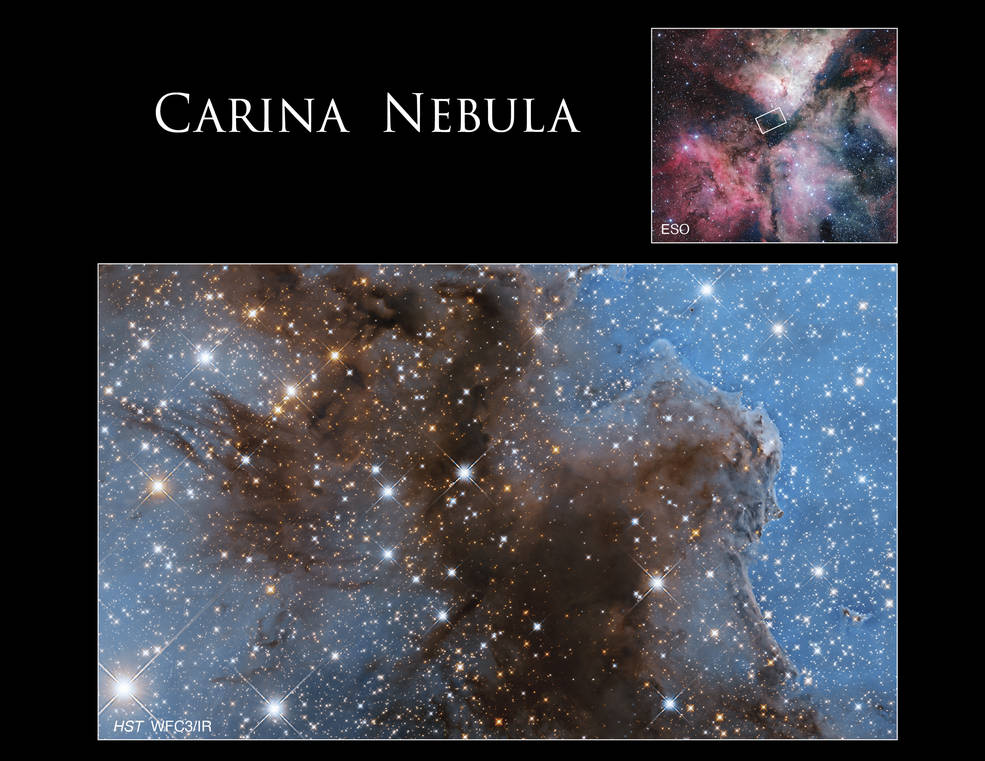Like a famous (and photogenic) actor followed by paparazzi, the Carina Nebula is one of the most photographed objects in space because of its stunning beauty. Over the years, the Carina Nebula has been one of the Hubble Space Telescope’s most-imaged objects.
This gorgeous and sparkling new image from Hubble shows just a small section of the Carina Nebula, a.k.a NGC 3372, which is an immense nebula that contains dozens of brilliant and giant stars that are estimated to be at least 50 to 100 times the mass of our Sun.
Carina is also studied so frequently because of what astronomers can learn about the life and death of stars. This nebula has dynamic bursts of star formation occurring, alongside stars that are dying. The most famous of the stars within this nebula is Eta Carinae, a bright star that has had a series of spectacular eruptions ever since it was discovered in 1752. According to astronomers, Eta Carinae will end its intermittent fireworks display with a final show-stopper: a supernova. And that will far outshine any of its previous outbursts.
This image shows only a small part of the nebula, a section located near the nebula’s center in an area with thinner gas. Due to the nebula’s enormous size – about 300 light-years – astronomers can only study it in sections, piecing together the data from separate images to get an understanding of the nebula’s large-scale structure and composition. If you live in Earth’s southern hemisphere, you can see the Carina Nebula with the unaided eye in dark locations.
 The Carina Nebula. The upper-left, inset denotes the area of the Carina Nebula Hubble observed in this new image. Credits: NASA, ESA, A. Kraus (University of Texas at Austin), and ESO; Processing: Gladys Kober (NASA/Catholic University of America)
The Carina Nebula. The upper-left, inset denotes the area of the Carina Nebula Hubble observed in this new image. Credits: NASA, ESA, A. Kraus (University of Texas at Austin), and ESO; Processing: Gladys Kober (NASA/Catholic University of America)For this image, Hubble used its infrared cameras, which detect longer wavelengths of light not scattered by the heavy dust and gas surrounding the stars.
The Carina Nebula is about 7,500 light-years from Earth in the southern constellation Carina, the Keel. Astronomers have given it many nicknames over the past few hundred years, including the Grand Nebula and the Eta Carinae Nebula.

